When men wore earrings and women wore pants
I spent Monday afternoon last week researching clothing from the time period I'm writing in, that is 1st century B.C. mostly to the north of the Korean peninsula. The dudes' feathered hats came up again, but I went through more comprehensive treatments of fashion in that era that were not focused exclusively on noblemen's hats. One of the books I took copious notes on agrees with me that the feathers were definitely real bird feathers early on but that feather-shaped or deer ear-shaped decorations also came into use later on.
All the books that I took a look at on this subject seem to discuss the Xiongnu(1) clothing uncovered at the Noin-Ula burial site in Mongolia, pointing out the similarities to Korean clothing in the basic structure of articles like form-fitting pants, wraparound tunic bound with a belt, and outer coat. A red tunic found in Noin-Ula shows traces of being trimmed with fur, which is a great distinctive look I could use since the ancient connection between the Xiongnu and Koreans seems inescapable.
Pants seem to have been the basic article for both men and women while skirts seem to have been optional. We are a cold-weather people at heart who came south from the steppes (my heroine's own journey is a major leg of that southward migration), and even the most recent and rigidly gendered iteration of Korean traditional clothes still included pants for women although they were deprecated to be underclothes under their skirts. In the third to fourth century A.D. murals you can see servant women and female dancers in pants as well as ones in skirts. You don't see noblewomen with visible pants, however. Most likely they wore underpants, especially in the kind of climate where most of my story takes place, but they had long flowing skirts to cover the pants up with.
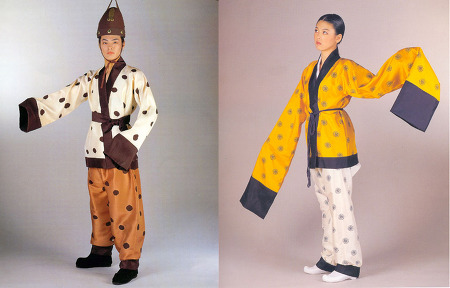
Recreated dancer costumes
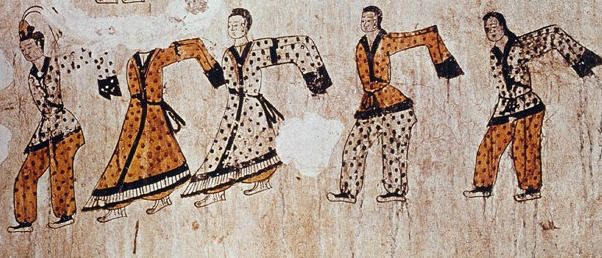
Original dancer costumes from a 5th century grave mural.
There were also discussions of hair: Topknots and braids for men, hair braided up into a mound on the top of the head for women, and what looks very close to a modern ponytail with two strands of hair left down on either side of the face and the rest tied back.
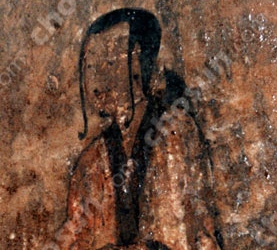
Also shoes, including half-boots and slippers! Earrings for both men and women! Different Koreanic groups had different styles, though the basics were similar (including feathers). People from Buyeo, another major group in the story, wore lots of white and their nobles wore dyed silks with leather coats on top. There are also records of tattoos down south in the peninsula for both men and women. Nomads in the North are also noted to have inked totem animals on their flesh so my heroine's people may well have worn tattoos, too, as they share common ancestors with many Northern nomadic groups like the Xiongnu.
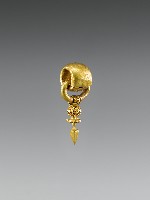
A gold earring found in an ancient grave.
Overall it was a hugely productive research session. I got so many ideas for how to flesh out the time period, fashion-wise!
I also let Pinterest sink its claws into me to collect awesome images of ancient clothing on the web. What fresh horror have I brought into my life?
Notes
1. A nomadic tribal federation who are said to be possible precursors of of the Hun. This latter part is disputed, however.


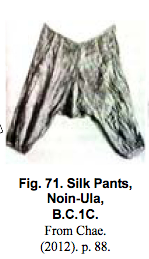
no subject
(I couldn’t help but read “tattoos down south” as a coy metaphor.)
Research sounds like so much fun, although stopping is probably less so.
no subject
(Cannot unsee tattoos down south noooo)
Research is a glorious escape and procrastination to boot, yes. And then I have to get back to reality. :(